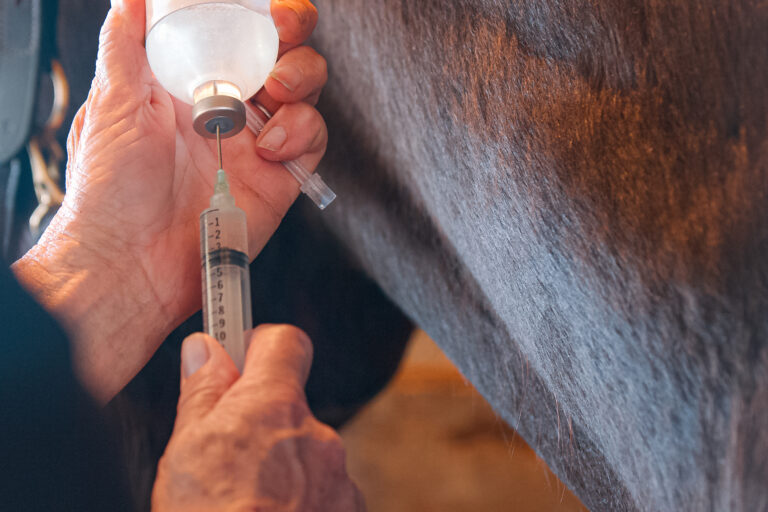In the Netherlands in 2005, a small number of unexpected methicillin-resistant Staphylococcus aureus (MRSA) infections in people with pig contact led to identification of a novel MRSA clone, sequence type (ST) 398. This clone was quickly called “‘livestock-associated” MRSA, although recent evidence suggests that it originated in humans as a methicillin-susceptible strain that subsequently moved to pigs, became methicillin-resistant, and lost some human-adaptive traits.
Nonetheless, whatever it is termed, ST398 MRSA is an important issue in people and animals in some regions. The organism has been identified in pigs (and to a lesser degree other livestock such as cattle and poultry) worldwide and is commonly found in people that have contact with livestock. In some northern European countries, it is the leading cause of MRSA infection in people.
Equine MRSA infections were first reported in the late 1990s, and it soon became apparent that MRSA was endemic in the horse population in many regions, being found in a small percentage (typically <3%) of healthy horses and causing sporadic infections and outbreaks.
Abnormally high rates of MRSA colonization of horse owners and equine veterinarians have also been reported, along with smaller numbers of zoonotic infections. Until the late 2000s, the vast majority of MRSA isolates from horses were common human epidemic clones (e.g. ST8), suggesting that equine MRSA was ultimately human in origin.
Yet recent years have ushered in a potential new concern, with identification of ST398 in horses. ST398 has now been reported in horses in many European countries as well as in a single Canadian horse. Zoonotic infection from a horse has also been reported. Highly variable colonization rates (0.5-11%) have been described, and ST398 has displaced other strains to become the leading cause of MRSA infection in horses in some areas of Europe. As is typical for any MRSA strain, a wide range of clinical infections has been reported, including skin and soft tissue infections, surgical site infections, pneumonia, catheter site infections, mastitis, and metritis.
Whether the emergence of ST398 in horses indicates a clinically relevant change for the horse population, a concern restricted to certain regions or farm types, or simply a shift in predominant strains with limited clinical relevance remains to be seen. While ST398 appears to be rare (at this time) in horses outside of northern Europe, the highly mobile nature of the horse population indicates a potential for horses to assist with global dissemination of this animal and human pathogen.
Horse owners and veterinarians should be aware of the risk of MRSA (ST398 and others), and use:
1. Basic infection control practices at all times
2. Enhanced infection control practices for any animal with an infection
3. Antimicrobials prudently
4. Bacterial culture and susceptibility testing routinely on animals with opportunistic infections
Emergence of this livestock-associated MRSA clone also highlights the often-overlooked potential for pathogen exposure of horses that have direct or indirect contact with food animals.
This information was published in the University of Kentucky Gluck Equine Research Center’s Equine Disease Quarterly. For more information on this topic contact Dr. J. Scott Weese, 519-824-4120, Ext. 54064, jsweese@uoguelph.ca, Ontario Veterinary College, University of Guelph,Guelph, Ontario, Canada.

![[Aggregator] Downloaded image for imported item #19123](https://s3.amazonaws.com/wp-s3-equimanagement.com/wp-content/uploads/2025/12/22164801/GettyImages-825125882-1-scaled-1-768x512.jpg)
![[Aggregator] Downloaded image for imported item #18374](https://s3.amazonaws.com/wp-s3-equimanagement.com/wp-content/uploads/2025/09/30140012/EDCC-Unbranded-28-scaled-1-768x512.jpeg)

